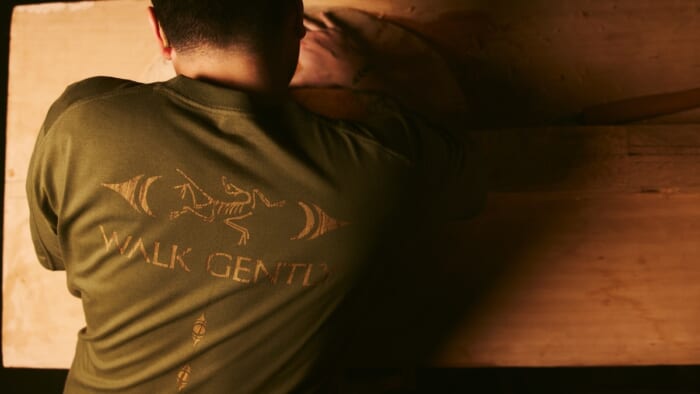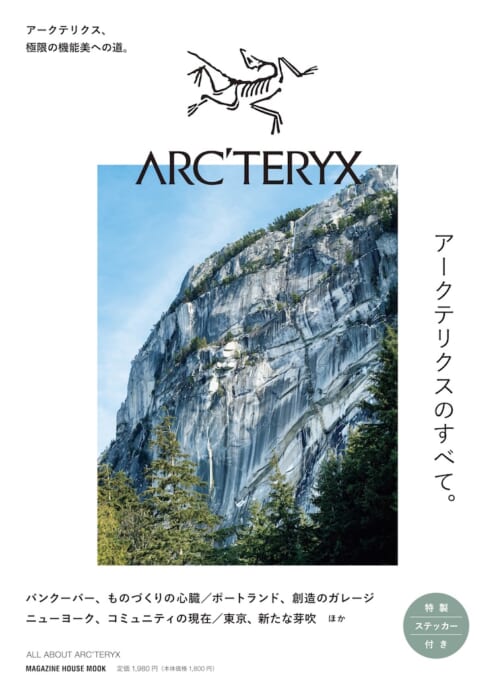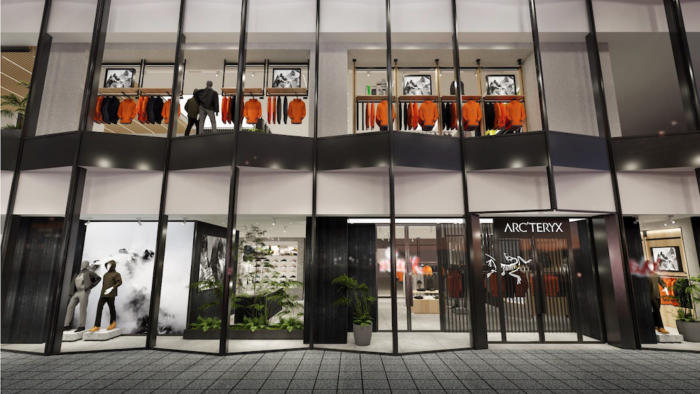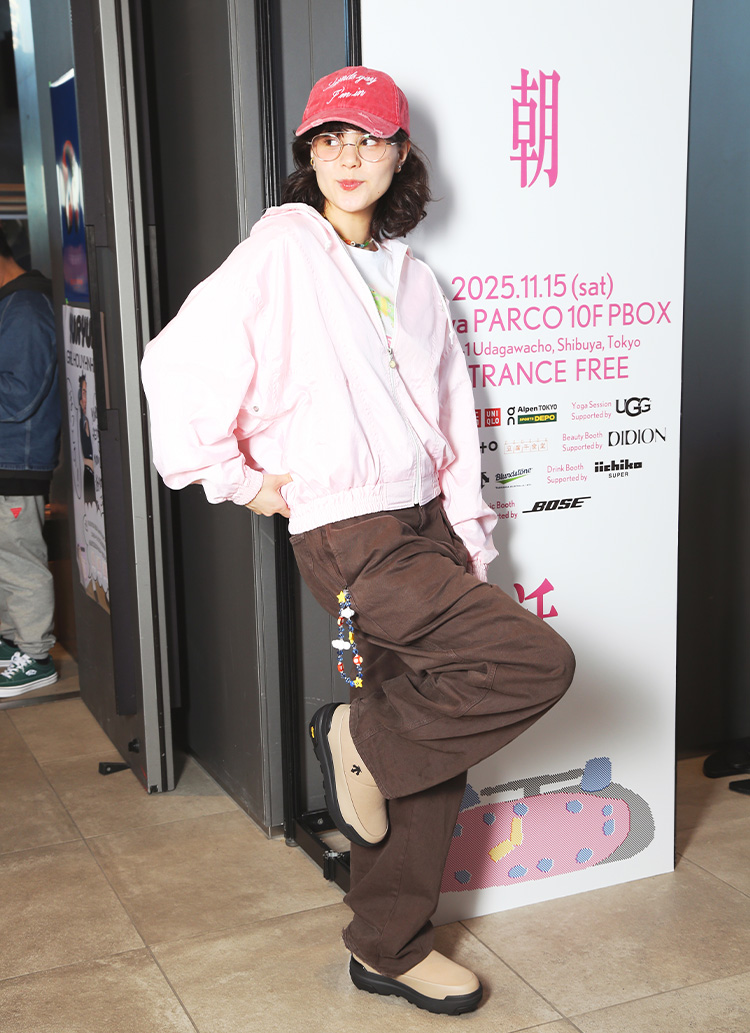Fear and a sense of accomplishment are two sides of the same coin when it comes to the outdoors. Perhaps this is why some people are attracted to 100-mile trail runs or backcountry skiing on ungroomed snow-covered mountains.
On Tuesday, November 19, Arc'teryx and Huinum held a climbing event. We are sure that the participants were able to experience special feelings that can only be born in nature. The "scary" turned into "fun," and the "fun" turned into "I want to try it again. Here is a report on the day of the event, in which we were able to catch a glimpse of these changing feelings.
A sense of accomplishment when you finish the climb and get down to the ground.
The setting for the day was Makuyama Park in Yugawara. It is known as a standard climbing spot because of its relatively warm weather throughout the year and easy access from central Tokyo. At the same time, the area is popular among hikers because of its hiking courses. About 4,000 red and white plum trees are planted in this magnificent natural setting, and in early spring, plum blossoms fill the entire field of view.
Upon arrival at the venue, we were first given a lecture on how to put on a climbing harness. A harness is a lifeline in climbing. It connects the climber to the belayer, who secures the climber's safety on the ground, and softens the impact of a fall in the unlikely event of an accident. In fact, this climbing harness is the origin of Arc'teryx. We wanted people to learn about the story and experience the functionality, which is why we decided to hold this event.
Two contracted guides from Arcteryx were the guides for the day.
From left to right: Michihiko Isaka and Daichi Terui.
After 10 minutes of hiking on the trail, we arrive at the rocky area. The two guides demonstrated the ropes to us as they hung them on the fulcrums. Isaka-san, who stands on the precipice with only his fingertips, says, "Place your buttocks on the heel of your raised foot as if you were climbing a staircase," to the surprise of all participants.
With practice being the only way to go, the participants also tried their hand at climbing. The two guides mentioned that while indoor bouldering involves climbing a predetermined route, climbing at a crag involves a variety of routes. They said that climbing at natural crags, where you have to search for routes by hand, gives you a sense of tension that you cannot experience on artificial walls.
And when you turn around, you see this view. I know in my head that the ropes are there so I will be fine, but it is still quite scary until I get used to it. Still, I decided that I had no choice but to do it, and I bravely climbed up the mountain.
The participants, who were puzzled by the prospect of climbing a rock wall for the first time, were surprised to find that they were able to do it. One of the main reasons for this was the support of their friends who were watching over them as they took on the challenge. Another is the sense of security that comes from trust in their gear.
After climbing through the challenge, the climber vocalizes "tension," and the belayer tautens the rope. What the climber should do at that point is to take his/her hands off the holds and walk backwards with his/her weight on the harness. They should place the soles of their feet on the wall in a sticky manner and descend as if descending from the hips.
Here, too, the initial feeling of fear is palpable, as the weight is placed on the gear at a height of more than 10 meters. But when they reached the ground, they had this look on their faces. The "fear" of doing it before turned into "fun" as we climbed, and the "fun" turned into "I want to do it again" after completing the task.
After climbing at the crag for the first time.
The participants continued to climb as long as time allowed. We asked the two participants, who said this was their first time at the crag, about their impressions.
I was scared at first. I knew I wouldn't fall, but I worried about what would happen if I did. But I still felt a great sense of accomplishment after the climb, and from the second time, I got the hang of it and enjoyed the climb. What was strange to me was that although I climb alone, I felt a sense of teamwork with the other climbers there. When I was cheered on, I was motivated to climb, and when I saw others climbing, I wanted to applaud them. I would like to try climbing again, but first I would like to start with basic climbing at a bouldering gym," said Ryota Imaizumi.
It was pure fun. When I saw the crag, I wondered if I could really climb it. But by the end of the event, I felt like I wanted to try more difficult challenges. After wearing the harness for the first time, I felt like I was able to get some sense of the roots of Arc'teryx and its approach to the field. I realized once again that shells and backpacks seen on the streets have been supported for many years because of this background.


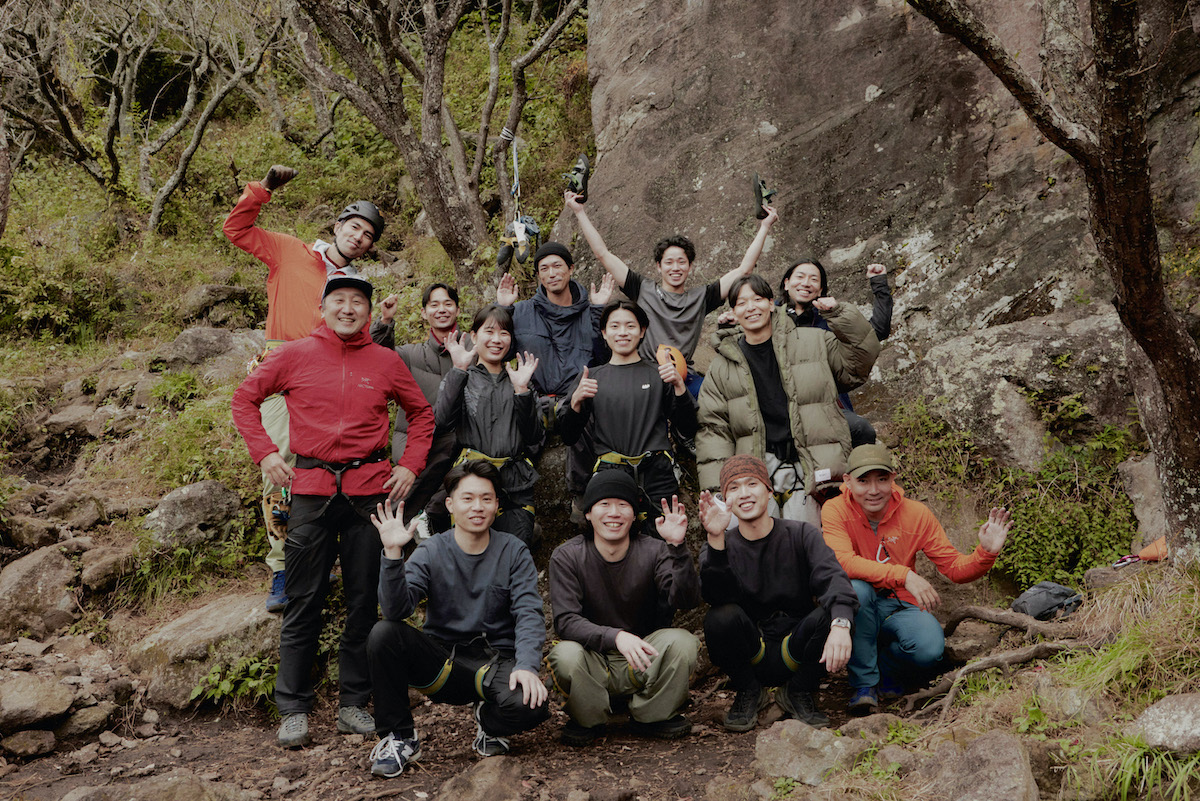


![【FOCUS IT.] A place where everything about the brand is packed. Sneak into the new Arc'teryx store in Ikebukuro, one of the largest in Japan!](https://www.houyhnhnm.jp/wp-content/uploads/2025/11/L1012407-1-525x700.jpg)
